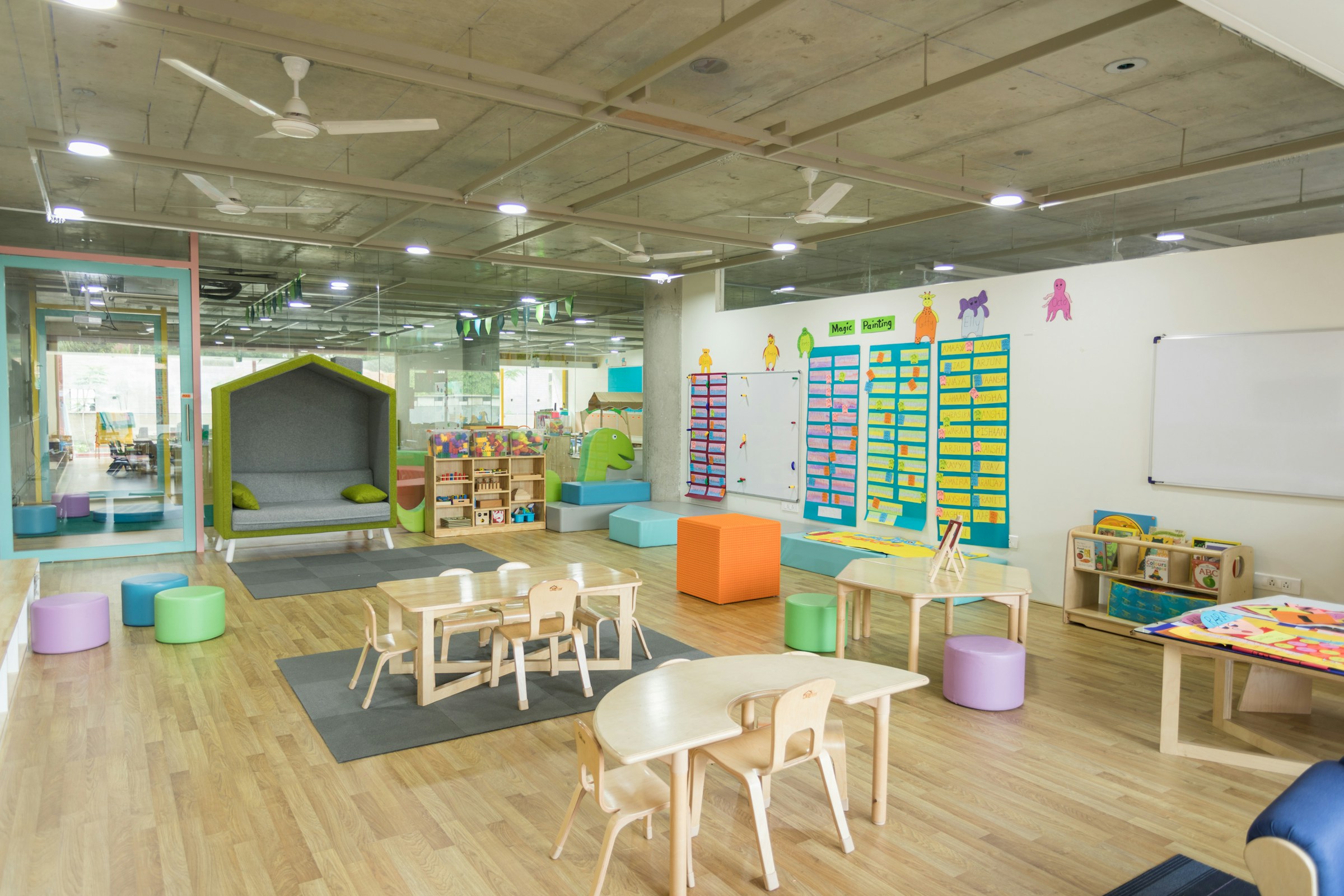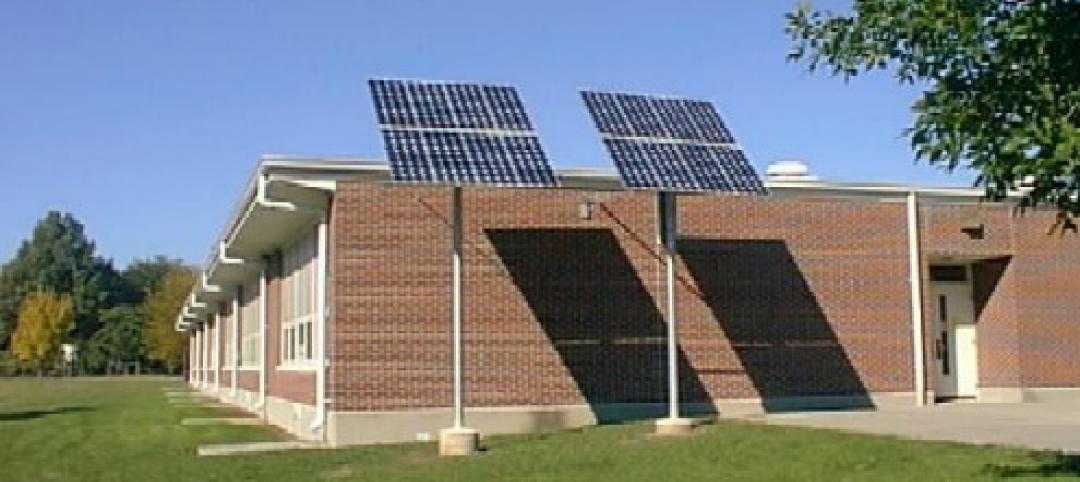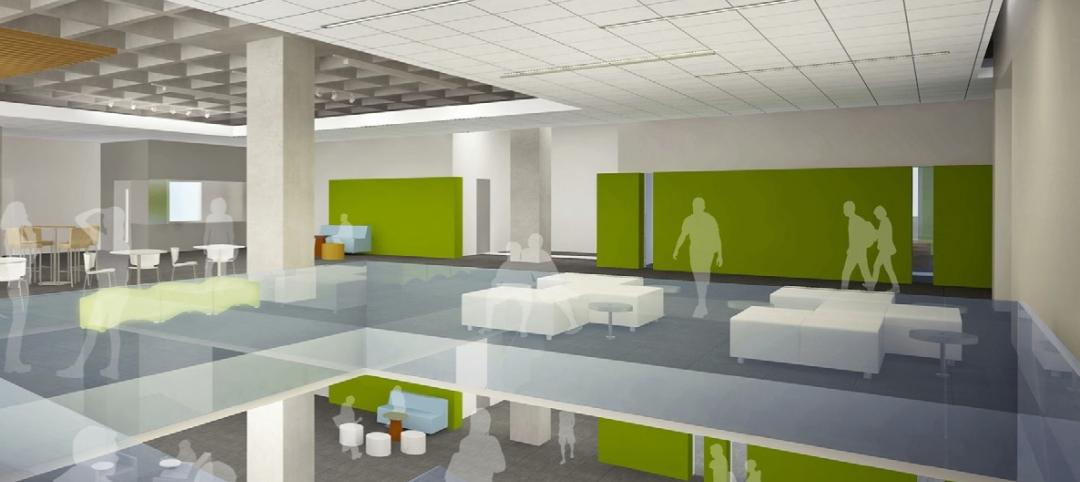More than 49 million students were enrolled in public elementary and secondary schools as of fall 2021, according to the Digest of Education Statistics. Coincidentally, that number (the “49” in 49 million) matches the average age of a main instructional school building in the U.S., according to the National Center for Education Statistics. More alarming, nearly four in 10 schools (38%) were built before 1970—and half of those have never had a major building renovation or addition.
Clearly, too many of the nation’s school districts are having to make it work with less-than-ideal educational facilities. But at what cost to student performance and staff satisfaction?
Newly released findings from a 28-school research study by Drexel University and Perkins Eastman reveal a strong correlation between the quality of school building environments and key educational indicators like test scores, graduation rates, enrollment, teacher retention—even community health and wellness.
The study, “Addressing a Multi-Billion Dollar Challenge” (140-page PDF download at BDCnetwork.com/2024-school-study), investigated the differences between modernized and non-modernized elementary, middle, and high schools—17 modernized, 11 non-modernized—throughout Washington, D.C., and Baltimore.
The primary finding: When measuring the educational adequacy of schools, modernized schools outperformed non-modernized schools by a wide margin, representing 13 of the top 15 performers, including the top 11 schools. The research team looked at factors such as instructional space, safety and security, environmental quality, extended learning, assembly, community, organization, and civic presence.
Drexel and Perkins Eastman hope the study will inform school districts on how best to invest limited CapEx funds. Some recommendations from the research:
Upgrades that enhance indoor environmental quality—air quality, lighting, acoustics, and thermal comfort—can positively impact students’ ability to focus and learn.
However, they warn that small incremental upgrades over time to items like HVAC systems can lead to potential detrimental impacts to the learning environments (e.g., unsightly conduit, blockage of windows).
These five areas offer the greatest opportunity for improvement: instructional space ambiance, exterior presence, safety and security, community assembly space, and main office location.
Overall, modernized schools better serve their community by being able to host initiatives like health clinics, food distribution programs, and public recreational facilities.
Download the full report at: BDCnetwork.com/2024-school-study.
Related Stories
| Sep 19, 2013
What we can learn from the world’s greenest buildings
Renowned green building author, Jerry Yudelson, offers five valuable lessons for designers, contractors, and building owners, based on a study of 55 high-performance projects from around the world.
| Sep 19, 2013
6 emerging energy-management glazing technologies
Phase-change materials, electrochromic glass, and building-integrated PVs are among the breakthrough glazing technologies that are taking energy performance to a new level.
| Sep 19, 2013
Roof renovation tips: Making the choice between overlayment and tear-off
When embarking upon a roofing renovation project, one of the first decisions for the Building Team is whether to tear off and replace the existing roof or to overlay the new roof right on top of the old one. Roofing experts offer guidance on making this assessment.
| Sep 16, 2013
Study analyzes effectiveness of reflective ceilings
Engineers at Brinjac quantify the illuminance and energy consumption levels achieved by increasing the ceiling’s light reflectance.
| Sep 11, 2013
BUILDINGChicago eShow Daily – Day 3 coverage
Day 3 coverage of the BUILDINGChicago/Greening the Heartland conference and expo, taking place this week at the Holiday Inn Chicago Mart Plaza.
| Sep 10, 2013
BUILDINGChicago eShow Daily – Day 2 coverage
The BD+C editorial team brings you this real-time coverage of day 2 of the BUILDINGChicago/Greening the Heartland conference and expo taking place this week at the Holiday Inn Chicago Mart Plaza.
| Sep 4, 2013
K-12 school design that pays off for students
More and more educators are being influenced by the Reggio Emilia approach to pedagogy, with its mantra of “environment as the third teacher”—an approach that gives Building Teams a responsibility to pay even closer attention to the special needs of today’s schools.
| Sep 3, 2013
'School in a box' project will place school in San Diego public library
Thinking outside the box, LPA Inc. is designing a school inside a box. With an emphasis on three E’s—Engage, Educate, and Empower—e3 Civic High is now being constructed on the sixth and seventh floors of a public library in downtown San Diego. Library patrons will be able to see into the school via glass elevators, but will not have physical access to the school.
| Aug 30, 2013
Modular classrooms gaining strength with school boards
With budget, space needs, and speed-to-market pressures bearing down on school districts, modular classroom assemblies are often a go-to solution.
| Aug 26, 2013
What you missed last week: Architecture billings up again; record year for hotel renovations; nation's most expensive real estate markets
BD+C's roundup of the top construction market news for the week of August 18 includes the latest architecture billings index from AIA and a BOMA study on the nation's most and least expensive commercial real estate markets.

















